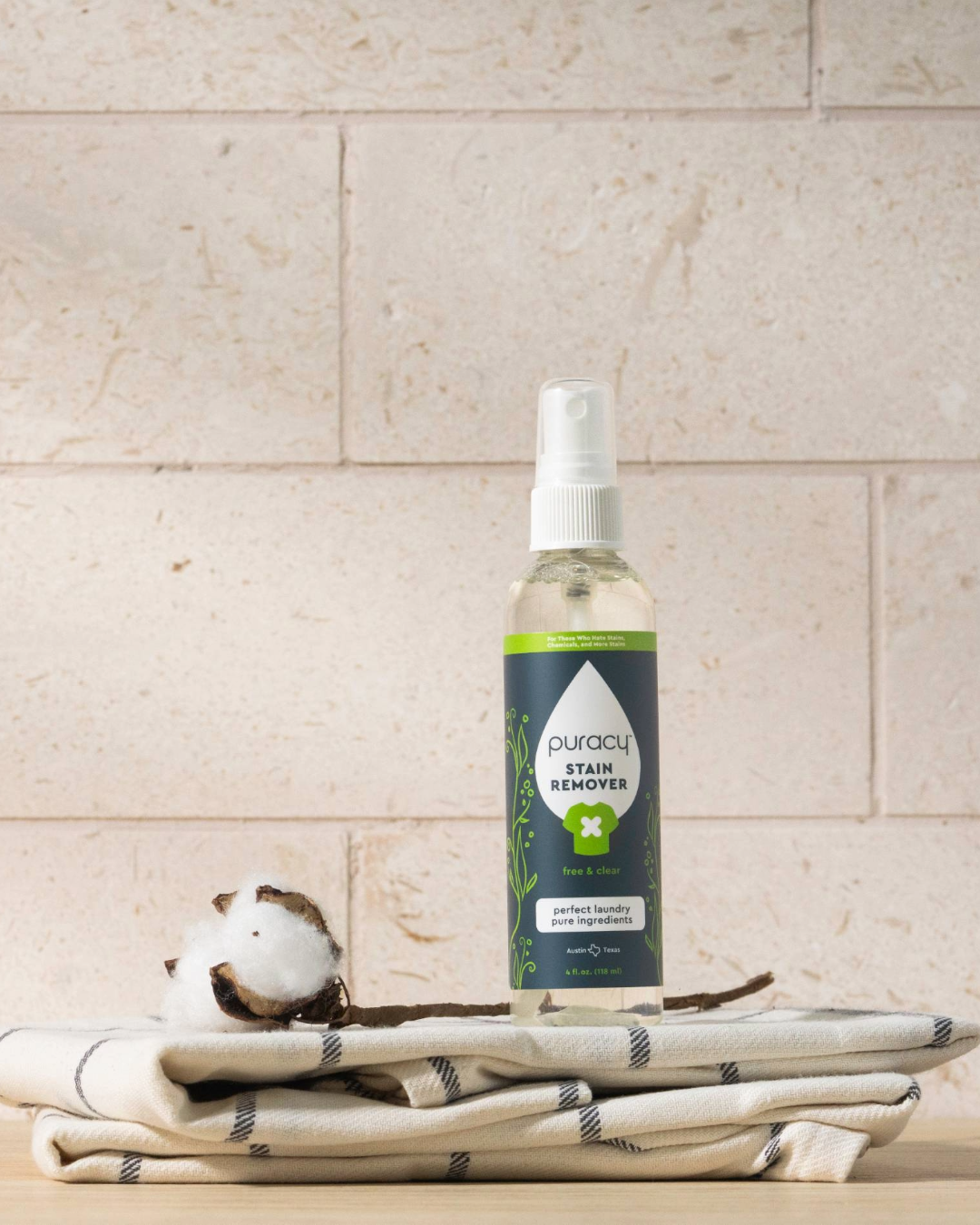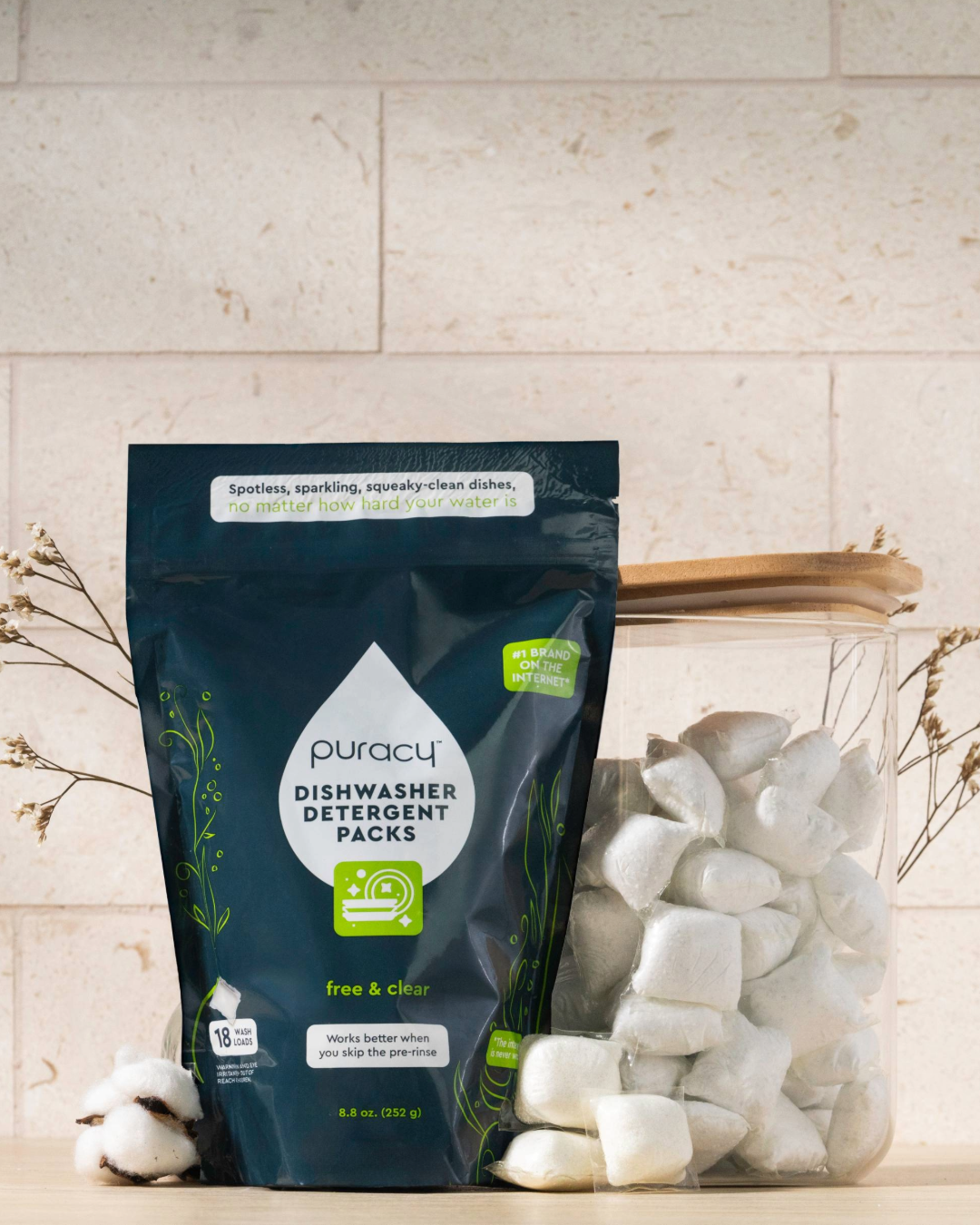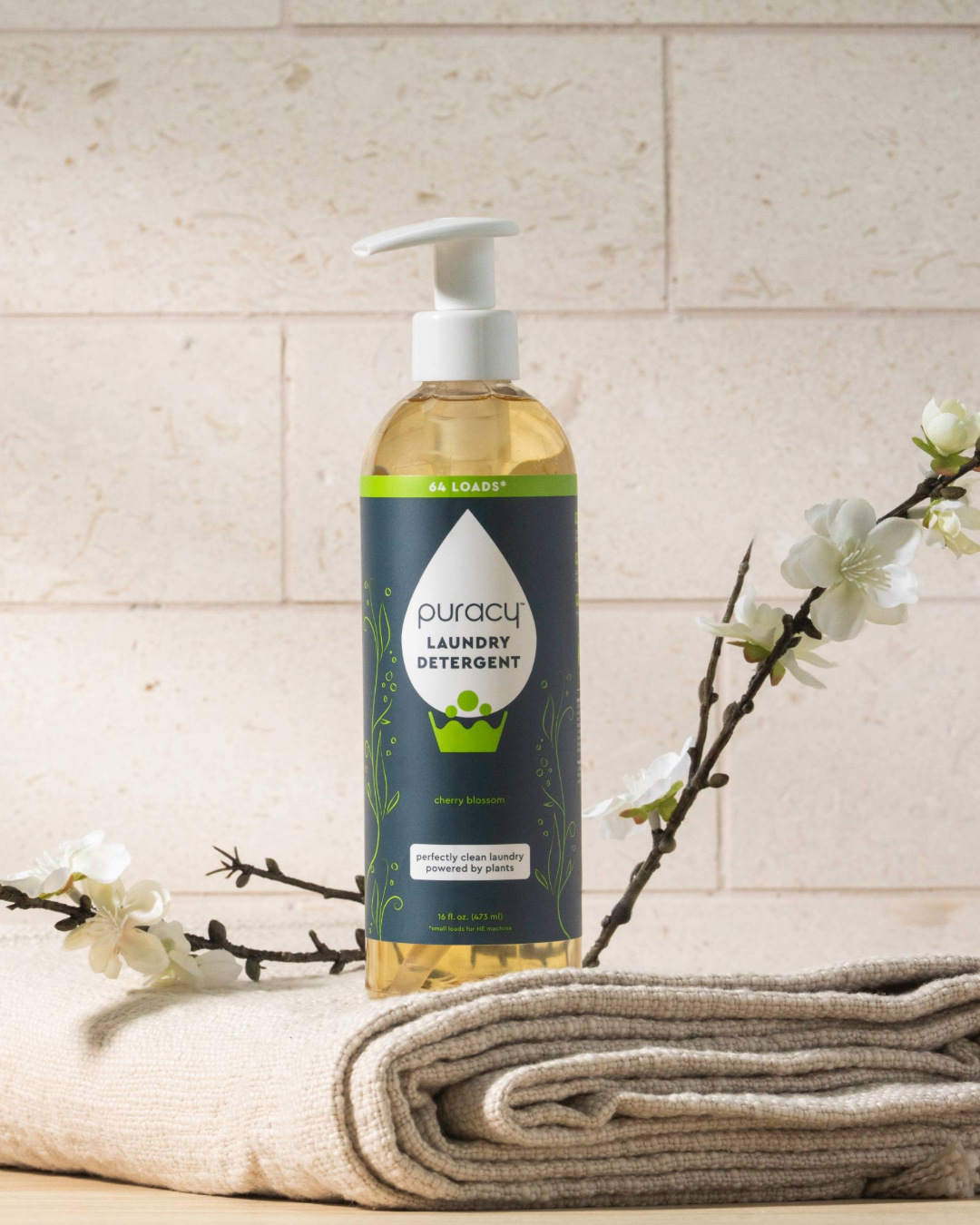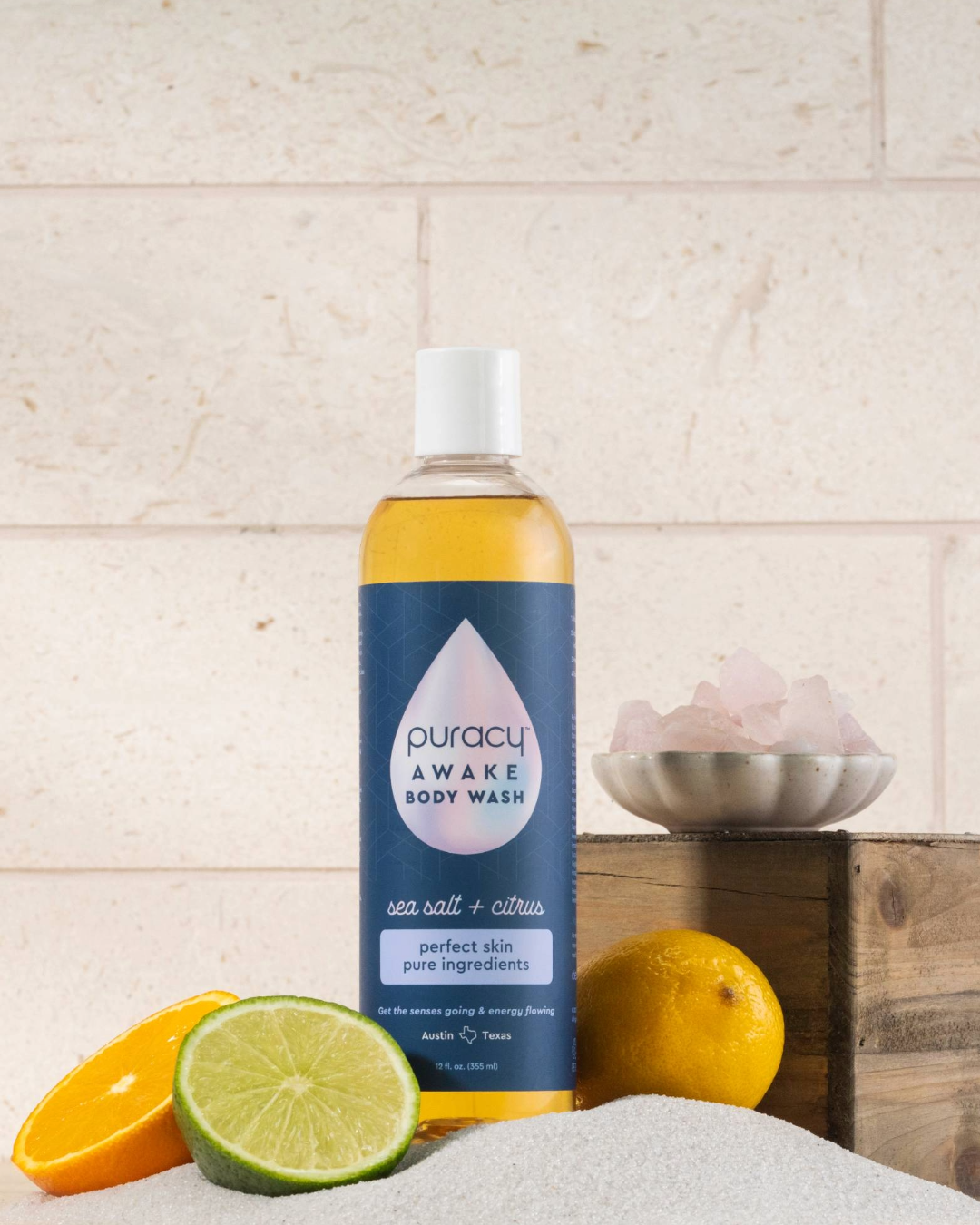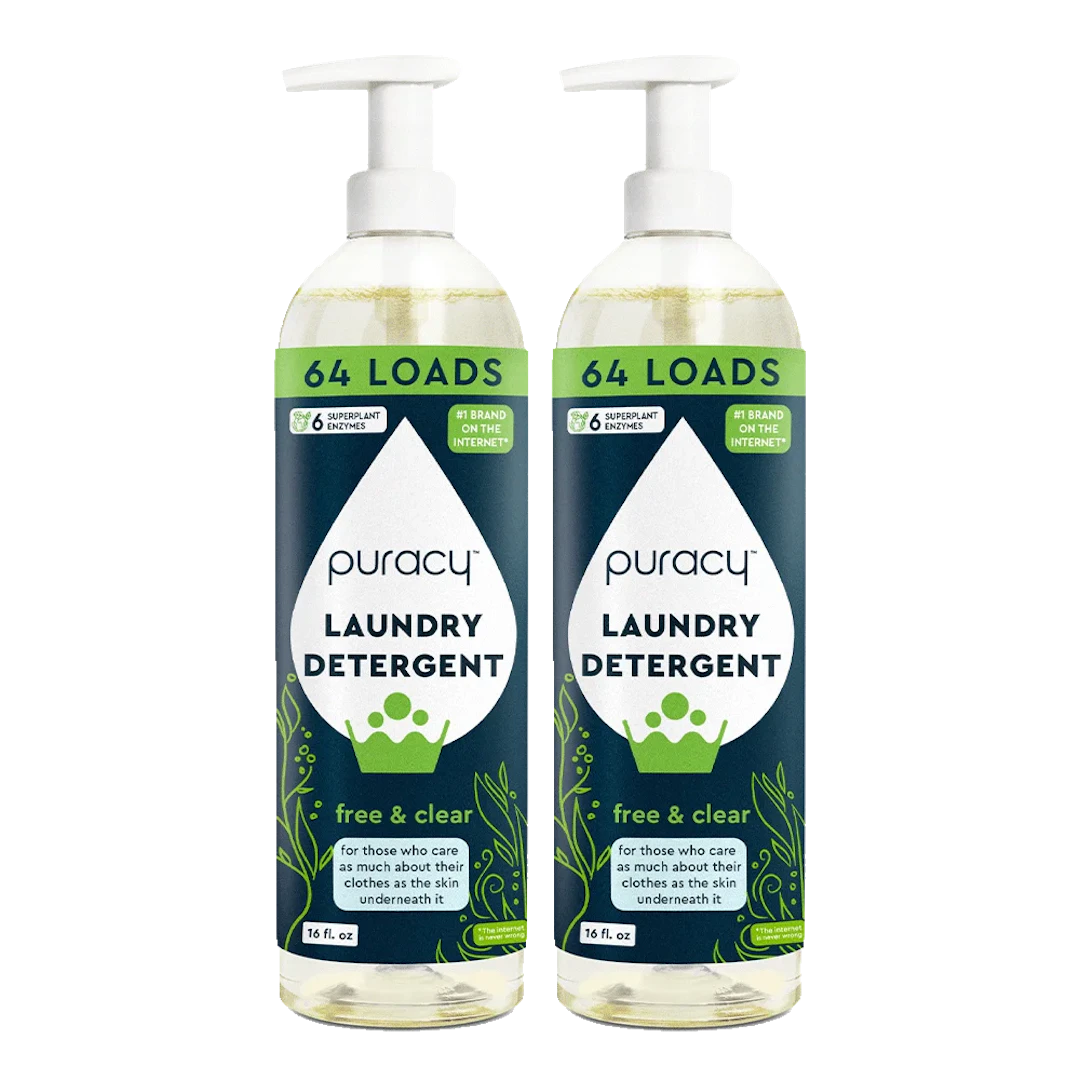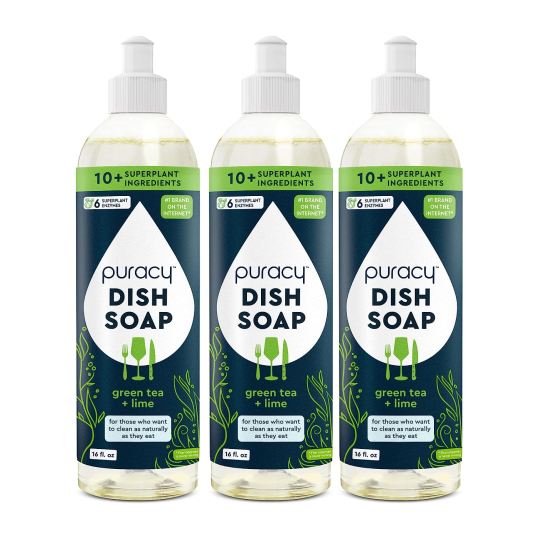Article: The Benefits and Limitations of Refillable Packaging

The Benefits and Limitations of Refillable Packaging
Did you know globally, we produce over 380 million tons of plastic yearly, much of which culminates in landfills, oceans, and even our food chain? Disturbingly, single-use plastics account for a staggering 40% of this production and it had detrimental effects on our natural world and biodiversity. Let’s take a look at how reusable packaging can work towards lessening this problem and what Puracy is doing towards a more sustainable future.
Refill Packaging: A Sustainable Shift

So, what is refill packaging? Simply put, it involves packaging that can be reused or refilled with the same product. This method not only reduces the need for single-use plastics but also aligns perfectly with the waste management hierarchy advocated by environmental agencies like the EPA, which prioritizes reducing, reusing, and recycling.
The Nature of Reusable Packaging
Reusable packaging comes in various forms, whether it’s glass bottles that can be returned and refilled or sturdy plastic containers designed for longevity. The concept isn’t new—remember how milkman used to deliver reusable glass bottles directly to our door?—but its modern application is expanding rapidly across industries.
Reusable wrapping is designed and produced with durability and reusability in mind, using materials and processes that ensure the containers can withstand multiple uses. The choice of material is crucial for refillable packaging. Common materials include high-quality plastics (such as PET or HDPE), glass, stainless steel, and aluminum. These materials are chosen for their durability, resistance to wear and tear, and ability to be easily cleaned and sanitized.
Once manufactured, refillable containers are distributed to consumers. The refill system can involve return-to-store programs, mail-in services, or in-store refill stations, where consumers can refill their containers with new products. By focusing on these processes, manufacturers can produce high-quality, durable reusable wrapping that meets the needs of both consumers and the environment.
Examples of Refillable Packaging
Glass Bottles
While glass is heavier and potentially more fragile, its cleanliness and recyclability make it a perennial favorite. Our Infinity Glass Spray Bottle holds up to 16 ounces and is light and versatile for home cleaning. Best of all, it’s built strong to last years and years.
Eco-Friendly Refill Pouches
Our waste-saving refill pouches not only uses less plastic but also reduces shipping weight and volume, enhancing overall environmental benefits. In fact, we now offer the largest refill pouches on the market for many of your favorite Puracy products, from hand soap to body wash and many products in between.
Clean Can
Aluminum presents another excellent option for refillables, combining durability with supreme recyclability. Our infinitely recyclable Clean Can design is made from recyclable aluminum rather than single-use plastic. Engineered to last, it's guaranteed to be used for a decade of daily use.
Concentrated Bottles
Lastly, there's a growing trend towards concentrated formulas provided in small format bottles. Users simply add water at home, reducing the product's carbon footprint. Our Everyday Surface Cleaner and Natural Laundry Detergent is concentrated, making this an accessible option for everyday consumers.
Applications of Refillable Packaging

The versatility of refill packaging is evident across various sectors:
- Cleaning Products: Refill systems are particularly effective, reducing plastic waste with every reused bottle or waste-saving pouch.
- Personal Care: Our body wash and baby shampoo are both available in eco-friendly refill pouches
- Beverages: Reusable packaging for your favorite drinks can be implemented through deposit-return systems, where consumers pay a deposit for reusable bottles, which is refunded upon return. Promoting consumer participation through incentives and convenience is crucial for success, plus it ensures they look out for these reusable systems wherever they go.
- Cosmetics: Refillable packaging can be seen in cosmetics through durable, reusable containers for products like lotions, creams, and makeup Some brands even offer in-store refilling stations or mail-in refill services. The best part? This reduces plastic waste, helps contribute to eco-conscious goals, and appeals to eco-conscious consumers.
Limitations of Refillable Packaging
Refillable packaging, while environmentally beneficial, has a few limitations
Logistical Challenges
Reusable packaging systems require an extensive and efficient infrastructure when it comes to collection, cleaning, and redistribution. Establishing and maintaining such infrastructure can be costly and complex, especially in regions with less developed recycling systems.
Consumer Convenience and Behavior
The success of reusable packaging heavily depends on us. Many people are simply more used to single-use wrapping, which is often more convenient and requires no effort beyond disposal. Encouraging consumers to return and refill containers can be difficult, especially if the process is perceived as inconvenient or time-consuming. That means it's up to us to encourage our family and friends to make the eco-conscious choice when it comes to reusable packaging.
Economic Viability
From a business standpoint, initial investments in setting up reusable systems are high. Businesses may face higher operational costs compared to traditional packaging systems. Additionally, the durability and design of reusable wrapping need to be high-quality to withstand multiple uses, further increasing production costs.
Key Takeaways
- By choosing reusable options, we not only reduce the environmental impact of plastic pollution but also support a more eco-conscious, circular economy. While limitations exist—such as initial costs and the need for consumer behavior change—the long-term benefits for our planet are profound.
- Embracing reusable wrapping offers a practical pathway to reducing our environmental footprint—one reusable bottle at a time. Whether it's through our glass bottles, aluminum cans, or concentrated refills, each step we take is a step towards a cleaner, more sustainable world.
- Remember, every small change contributes to a much larger battle against plastic pollution. Let's continue this journey together, fostering a healthier planet for future generations.
